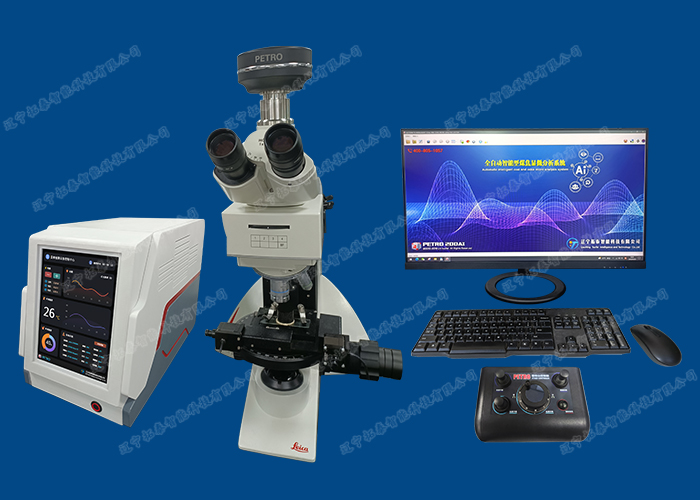
Recommendations for microscopes used in coal petrographic analysis
2023-12-04 14:35Recommendations for microscopes used in coal petrographic analysis
Leica and Zeiss are both 170-year-old German companies with internationally renowned optical microscopes, one in East Germany (Zeiss) and one in West Germany (Leica). The two companies compete globally, so there are corresponding product sequences, and the corresponding table is as follows:
Correspondence table between West German LEICA and East German ZEISS product series
| Product technical level | German LEICA | Corresponding model of East Germany ZEISS |
1 | Low level | Type 750 | LAB type |
2 | General research level | DM2500P | Axioskop 40 pol |
3 | General research grade upgrade | DM2700P | Axio Scope A1 pol |
4 | High grade | DM4P | Axio imager A2 pol |
Note: When evaluating, you must look at the corresponding models to be comparable. For example, you cannot compare Zeiss' low-end LAB model with Leica's mid-to-high-end DM2700P. The two are not of the same grade and are not comparable. The price difference is much different, and the LAB cannot be compared with the DM2700P in terms of functions. Of course, the Zeiss LAB is also much cheaper than the Leica DM2700P.
Similar products include Japanese and domestic microscopes. The overall comparison is as follows:
Comparison of various microscopes that can be used for coal petrographic testing instrument at home and abroad
Brand | Representative models | Effect of use | ||
General research level | Upgraded model | Intelligent research grade | ||
Leica | DM2500P | DM2700P | DM4P | Imaging effect is good, it uses precision gears to reduce the speed and returns accurately. |
Zeiss | Axio skop 40 pol | Axio Scope A1 pol | Axio Imager A2 pol | The imaging effect is good, but the focusing mechanism uses harmonic gear deceleration, and there is slipping in the automatic detection remote, making it impossible to return accurately. |
Nikon | LV100 |
|
| Imaging effect is average. |
Olympus | BX51-P |
|
| Imaging effect is average. |
Made in China | Optec |
|
| Imaging effect is average. |
Conclusion: Currently, the most suitable model for automatic petrographic detection is the Leica DM2700P. The image is clear, the return position is precise, and it can be equipped with a high-precision focus control system.
From the perspective of practical use of coal rock analysis and coke detection:
•Manual coal petrographic detection only requires a clear image of the microscope. Excessive requirements are of no practical significance. From this point of view, even if it is equipped with a domestic microscope, it will not affect observation and detection.
•For automatic detection, on the premise of ensuring a certain degree of clarity, what is more critical is the accuracy of the focus return of the focusing mechanism. Otherwise, the huge result deviation caused by virtual focus misdetection will make the equipment unusable.
•Occasions where continuous operation occurs for a long time, such as: monitoring of incoming raw coal for enterprise production. The microscope lens is required to withstand the high temperature of the halogen lamp and have a long service life.
Therefore, among various microscopes used for coal petrographic detection, especially those used in factory environments where speed is required, the Leica DM2700P is the best choice for two reasons:
1.Focus slipping problem:
DM2700P has precise gear return, which is especially suitable for automatic quick return focusing. However, the focusing axis of Zeiss A1.POL is slipping and cannot automatically return accurately. Therefore, Zeiss automatic coal and rock all use digital zoom to approximate accurately. Digital zoom only changes the clarity of the picture through computer algorithms. It is actually detected under defocus conditions, and the resulting reflectivity value will be reduced. Very inaccurate.
2.Problems with long-term high temperature life of the lens:
Factories generally conduct continuous inspections for a long time. Due to material problems, the front lens of Zeiss light boxes cannot withstand the heat of the halogen lamp and will crack. As a result, the entire light path is no longer a true parallel light path, and stray light increases significantly.
Of course, to be fair, Zeiss microscopes also have some advantages. For example, the numerical aperture of the 50x oil immersion objective can be 1.0. The field of view of the eyepiece is slightly larger, and the number of holes in the objective lens transfer disk is larger. However, these are basically useless in actual observation of coal, rock and coke, and have no substantial significance. It does not mean that detection cannot be achieved if these parameters are not met. . Moreover, some parameters are counterproductive when they are too large, violating national standards.

